How Your Lazy and Lousy Leadership Language May Be Tanking Your Influence with Others
I graduated from college in 1991 and landed in central Minnesota to start my professional career as a k-12 teacher and coach. Since I knew few people besides those I worked with, friendships emerged through my coworkers. Many of them had also made big moves for their teaching positions, so we naturally became like a second family to each other. It was easy to ascribe to the phrase:
“We are like family here.”
While our intentions were good in thinking about my colleagues as family, I grew to realize that phrase was problematic.
Years later, I worked for a boss who regularly espoused that exact phrase, “We're like family.”

That was all lovely until the organization went through a few bumps and the cultural implication at the time became more combative with a domineering fist at the helm barking out orders to help out “the family.”
I didn't fully appreciate the connection until I read Sharone Bar-David's book Trust Your Canary: Every Leader's Guide to Taming Workplace Incivility. She writes in one of her articles:
“At the heart of this belief lies the notion that the closeness and caring that characterize family life allow members of the ‘workplace family’ to cross colleagues’ personal boundaries without being hurtful or inappropriate.”
Her perspective motivated me to eliminate this phrase from my vocabulary. While I still have close relationships with the people I serve, I've stopped short in recent years from thinking about (or espousing) them as actual family.
The Problem with Incongruency
Many of our everyday language traps result from habits that don’t actually align with our intentions. This results in an incongruency. When you and I are incongruent, we project confusion and doubt to others.
The examples below are the most common phrases I regularly encounter when language doesn't match what's intended. I'm still working to eliminate some of these phrases I've said myself.
As many of us discover, the leadership development journey is as much about what to stop as it is about where to start.
Transform Your Future | Lead With Clarity | Grow Your Performance
You aren't alone if you've struggled to find clarity in leading your team forward.
Teams function at less than 60% of their performance potential and community trust is at an all-time low.
Simply put, leading people and systems has never been more complex.
The Lead Team Institute {LTI} will equip you to break through your growth barriers.
Whether it's leading results-based teams, communicating with success, improving your engagement, increasing influence, refreshing your vision, building trusting communities, or many other challenges we face as campus leaders, you'll know exactly what steps to take to generate momentum for your community.
If you want to build an irresistible campus brand, you will want to join the waiting list to enroll in the next Lead Team Institute {LTI} Campus Cohort.
Accelerate Your Team’s:
- Communication
- Connection
- Alignment
- Capacity
- Execution
- Culture
Reserve Your Spot for Fall 2023. Join the Lead Team Institute Waitlist Today!
“Frankly…” or “To be honest…”
A common example of incongruent language is prefacing what's about to be said with “Frankly…” or the closely related “To be honest…” Most of the time, when this is said, the intention is to emphasize candor.
Unfortunately, the listener sometimes hears the opposite. A sudden emphasis of candor may leave the other party wondering what changed. When I notice someone say, “To be honest…” during a conversation, I find myself wondering if they've been honest up until that point.
Skip the doubt and drop this qualifying language. If you notice yourself saying this a lot, you might ask yourself:
“Am I actually providing as much candor as I claim?"
Hollow Apologizing
I most regularly see unnecessary apologies at the start of a formal meeting or presentation when something unexpected occurs. It might sound something like this:
“I want to apologize in advance if I miss a few things in this presentation. Jon was supposed to present this section, but he's unexpectedly out today…I just got the material this morning. I'm not really the expert on this, so I hope you'll forgive me if there's missing information or if this leaves you confused.”
Hey, if it's just you and a few colleagues you know well, no big deal, right?
Yet, I've seen it happen often when someone opens with language similar to the above in front of an executive team or board of directors. I begin to doubt the presenter's credibility when I hear this kind of opening.
By all means, apologize if you've done something wrong or errored, but don't dig yourself into a hole before you've even started. Very few people care what preparation didn't quite go according to plan.
Instead, skip the unnecessary apology, give yourself a pep talk, and show up to serve, even if you did get the slides just an hour earlier.
Side Note: A close cousin of the above is spending inordinate amounts of time troubleshooting technology problems in front of your audience. Always arrive early to set up your tech and have a backup plan. If the technology fails and you can't resolve it in 15 seconds while on the game field, move on and adapt.
“What we came up with…”
We all received an assignment or project that we weren't super excited about but got charged with delivering. I regularly recall presentations in school where a fellow student started a project presentation with, “OK, here's what we came up with…” To me, this phrasing implies throwing something together at the last minute.
That may work fine in your college marketing course, but it's an odd way to start a professional interaction. And yet, I've heard many proposals over the years begin with, “Here's what we came up with…”
Oddly, most of the time, the person saying it has easily met or exceeded expectations. Still, either out of habit or their lack of personal interest in the topic, their language could be better.
If, indeed, it's the case that you're not as excited about the project as your stakeholder, I'm reminded of this quote from Susan David.
“Emotions are data, not directions.”
Just because the work isn't compelling doesn't mean you must announce it. It's about who you are serving, not you.
What's better? Keep it simple and start with, “Here's my proposal…” or “After a detailed analysis, we're making several recommendations…”
Does anybody have any questions?
Like many leaders, I've attended more meetings and presentations in my career than I could count. A majority have been helpful in some way. And many of them ended with this:
“Does anybody have any questions?”
Well-intended? Sure. After all, don't you want to solicit questions?
Yes, but how you do it is critical.
I've often seen the “Does anybody have any questions?” combined with a somewhat nervous glancing around the room, odd facial expressions, and occasionally walking away without saying more. Sometimes, body language suggests that this “question” was merely intended as a segue to the next item on the agenda.
If questions are present, you want to convey that you're ready and willing to respond. I often say, “Who has the first question?” Not only does that wording invite interaction, but it also portrays confidence. Be sure also to provide time for people to think before they respond (the teacher in me recommends 8 seconds). If you only hear silence, follow up with “A question I'm commonly asked is…” that reinforces a key message.
Either way, assume your audience have questions and demonstrate that you are ready and willing to engage.
Self-Congratulatory Language
I regularly listen to podcasts while working out or traveling to expand my perspectives and thinking on timely topics. The hosts on my playlist are all very knowledgeable and highly experienced.
Many of them also start the episodes explaining how awesome and helpful the forthcoming conversation will be with so-and-so. I typically 1.75X through that noise to get to the good stuff, but it makes me cringe a bit each time I hear someone telling me how to feel about what I am about to experience instead of allowing me to come to a positive conclusion on my own.
We all need to market our work, but how you do it is critical.
Rather than, “This is some of our best work ever,” or “I know that you're just going to love this,” or using anything containing the phrases “value bomb” or “blown away,” consider a different approach.
Donald Miller, the bestselling author of Building a Story Brand, said this recently on one of his latest podcasts that hit a homerun:
“Insecure People talk about themselves. People who are confident talk about others. Demonstrate through your language that you understand the problem the other party faces, and then explain how you can help address it. If you talk about yourself, do so in the context of how it helps your stakeholder get to where they need to go.”
When it's essential to highlight your credibility, make the claim stronger by citing a respected third party. When my work becomes relevant in a dialogue with someone who doesn't know me, I'll sometimes offer this:
“Google Analytics ranks our
HPG site as the #1 search result for “Leadership Team Performance” in the United States.”
The implication? A respected entity other than me says that my work is helpful for campus leaders who want to improve.
Virtually every leader has third-party examples they can point to. Spend a few minutes surfacing your go-to examples to frame your work well.
Insensitive Phrasing
We've all used language that may have seemed fine but landed with another person very differently. Leaders should be especially vigilant about their references to faith, gender, culture, or other dehumanizing phrases that don't align with their intended message.
When expressing disagreement with an idea or another, I sometimes hear, “Well, I don't care if…” or the more direct, “I hate it when…” Yes, while people may use that language in everyday dialogue, expressing “not caring” or “hate” for someone or something might land very differently with others within your sphere of influence.
What's better? Use gracious language that aligns with the intended message. Stating, “I have a different opinion…” or “Yes, I'm aware that finance thinks differently about this…” conveys a clear thought without the emotional baggage.
Avoid language referencing gender, culture, or physical attributes when that's not what you're discussing. Accounting for “man-hours” or referring to all people as “guys” isn't inclusive.
More problematic phrases like, “We just need some warm bodies” or “It's time to put butts in seats” imply that humans are things, not people. Additionally, language like “He doesn't have the cojones…” may have sounded cool in high school, but mixing or comparing human beings to body parts is never professional.
Instead, say what you mean: “There are four open positions that we need to fill,” or “We still have 40 tickets to sell for the event,” or “I have concerns about his initiative.”
Beware also of analogies that evoke a clear image but not one you intend. An example I’ve heard is, “We all need to open our kimonos…” said in the context of sharing information or data. In addition to being culturally insensitive, it creates an image that isn't appropriate in most workplaces.
Application – Next Steps
Opinions vary on wording, but the more significant point is to examine the leadership language you're using that might not align with what you intend. Perhaps an example above has surfaced where this could be true for you.
Then, pick one phrase to change or replace with different wording. Aim to use it at least once a day. Right now, I'm working on replacing the phrase “you guys” with “you both” when referring to our adult son and daughter together.
Drop me a note if you were poked a little by this post and how we can stay on the journey of “better” together.
Related Reading
Trust Your Canary: Every Leader's Guide to Taming Workplace Incivility* by Sharone Bar-David.
P.S. Campus teams, on average, function at less than 60% of their performance potential because they don't invest in team capacity and team potential.
The HPG Team has created a training and coaching practice to help teams win against the gravitational pull of average performance, and we can help YOU!
- Check out our suite of leader and team resources 👇🏼
https://www.higherperformancegroup.com/resources - Set up a call to explore the next steps 👇🏼
https://www.higherperformancegroup.com/schedule
More Blog Articles



